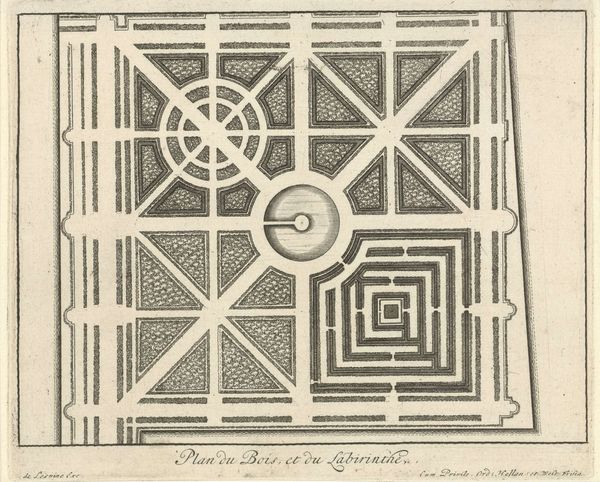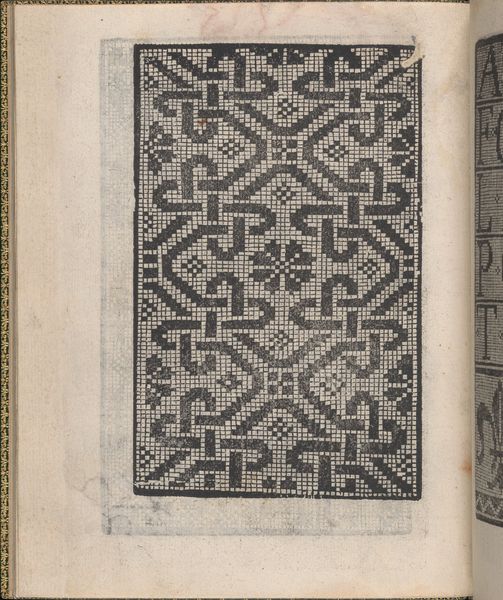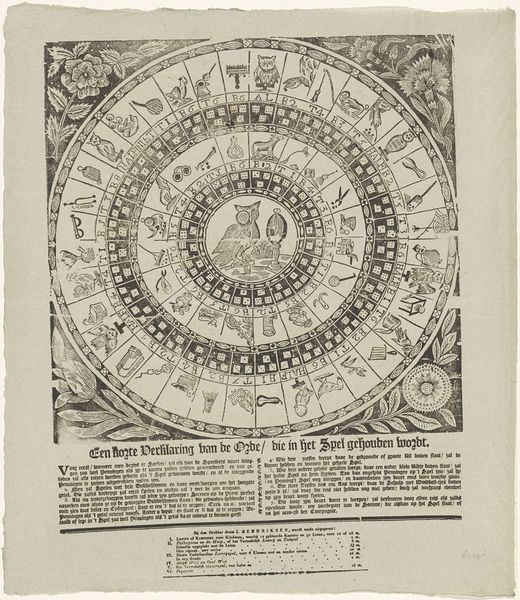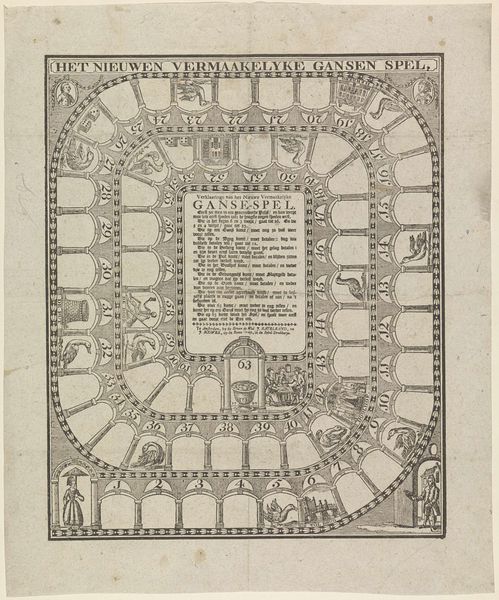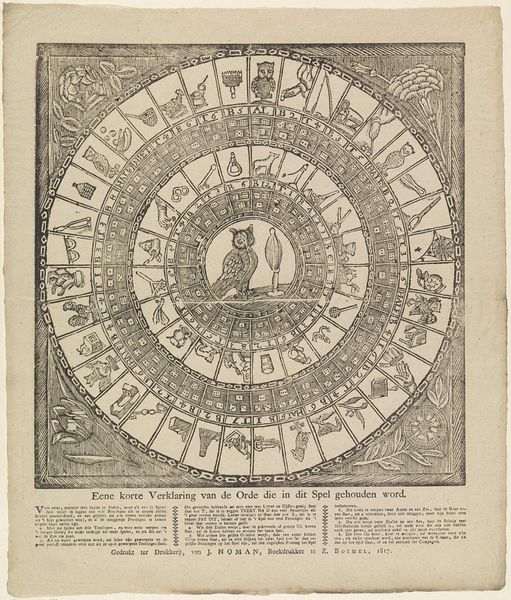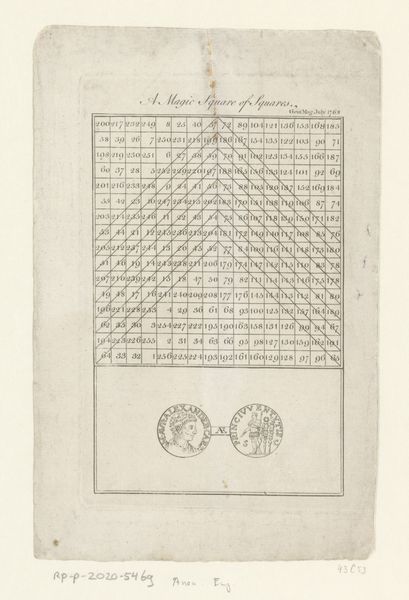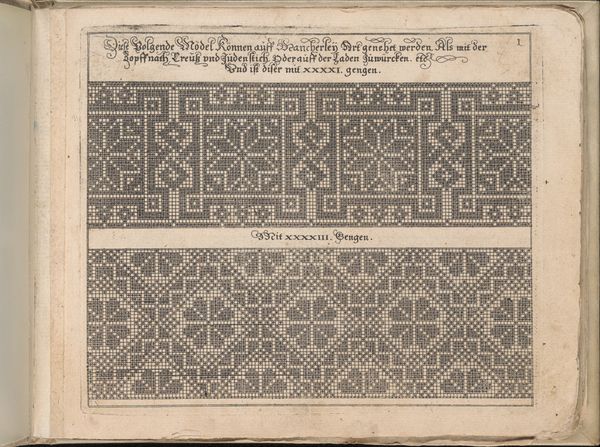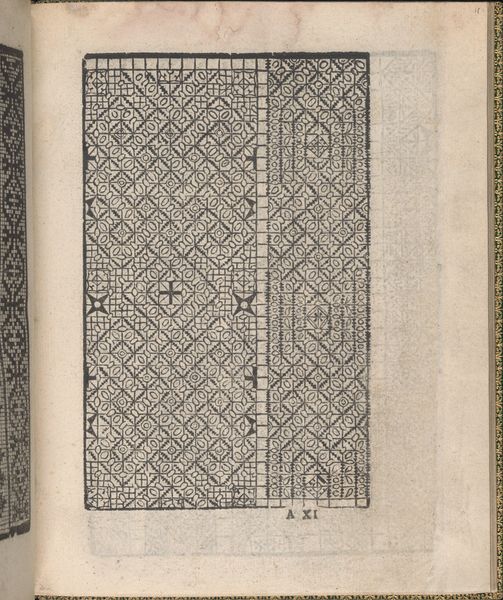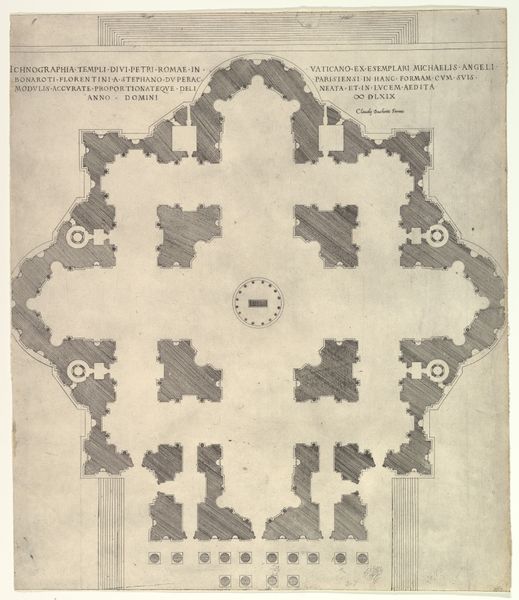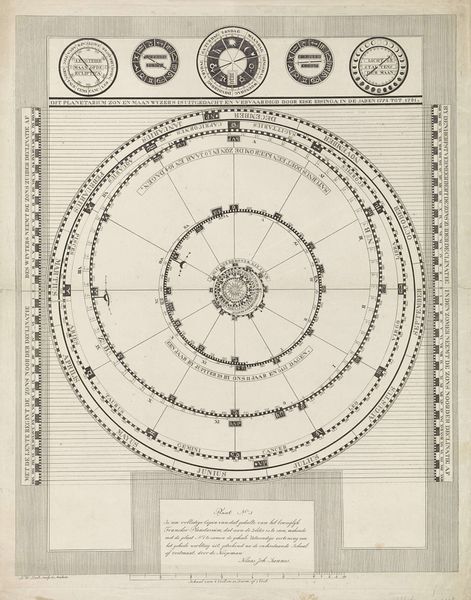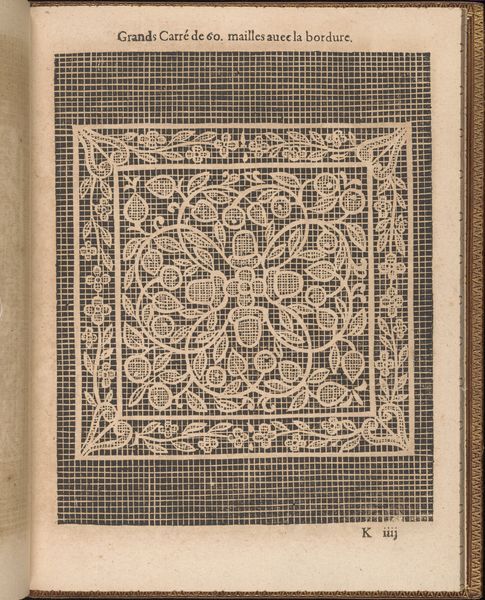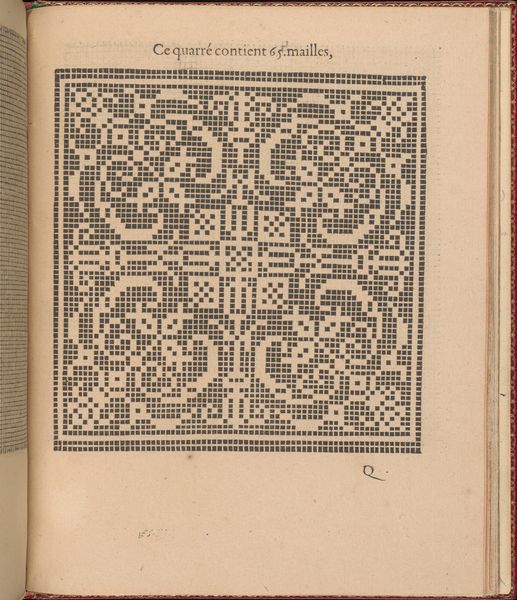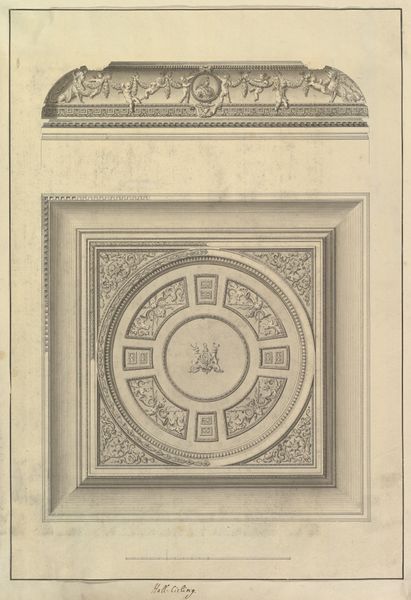
print, engraving
#
baroque
# print
#
geometric
#
line
#
cityscape
#
engraving
Dimensions: height 111 mm, width 95 mm
Copyright: Rijks Museum: Open Domain
Curator: This engraving, titled "Doolhof," which translates to "Labyrinth" from Dutch, was created in 1731 by Bernard Picart and is currently housed here at the Rijksmuseum. What's your initial take? Editor: Intriguing. It presents itself as a rather ordered complexity. The strict geometric forms, especially that prominent central circle contrasted with the square perimeter, hint at an effort to control or codify nature itself. Almost feels like a blueprint rather than an artwork. Curator: Precisely. Picart wasn't merely creating a pretty picture; he was demonstrating how to construct a 'belliboquet,' as the text describes. Note the labor and artisanal knowledge implicit in the engraving process—the skill involved in meticulously etching such a design. Editor: I can certainly see the geometrical precision. It's fascinating how Picart uses lines and forms to create the illusion of depth, of paths leading both inward and away. The recurring squares seem to offer an element of visual stability. Is it suggesting reason within chaos? Curator: One might interpret it that way. The inscription implies a rational process— "instruction" to "measure round" shapes. It emphasizes humankind's attempt to impose order, and potentially dominate the physical environment through geometry. Gardens themselves were status symbols that showed people had the material means to manipulate the world around them. Editor: Right, but it strikes me as somewhat cold. Perhaps because the line work, though intricate, feels very controlled and unyielding. Yet, there's a strange beauty in its severe formalism, wouldn't you say? Curator: Undeniably. It embodies an era grappling with Enlightenment ideals of reason but also reveals the immense resources—material and human—required to achieve that vision. Editor: Looking at it closely, the piece's formal constraint belies the disorienting, mind-bending nature of its subject. It makes one consider how form can be manipulated to both reflect and complicate content. Thanks to you, though, it's also very obvious how embedded it is in an economic reality. Curator: Absolutely. These precise renderings point to a relationship between knowledge, labor and design. Thank you. I am so pleased you agree!
Comments
No comments
Be the first to comment and join the conversation on the ultimate creative platform.
